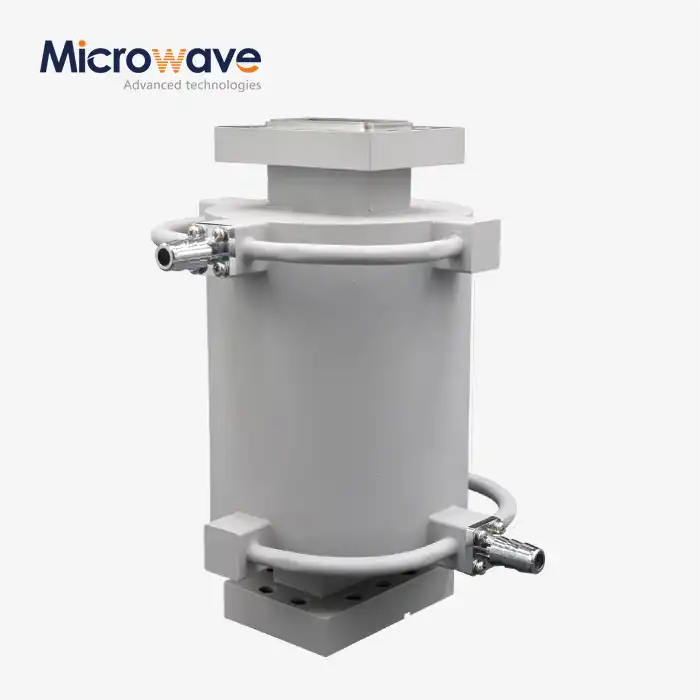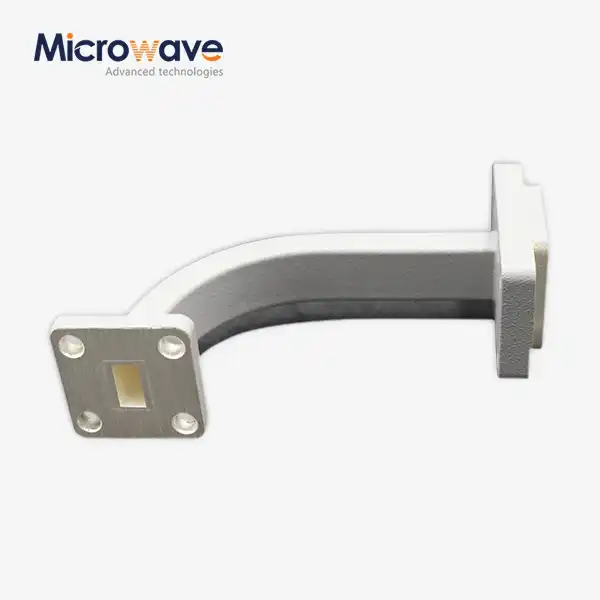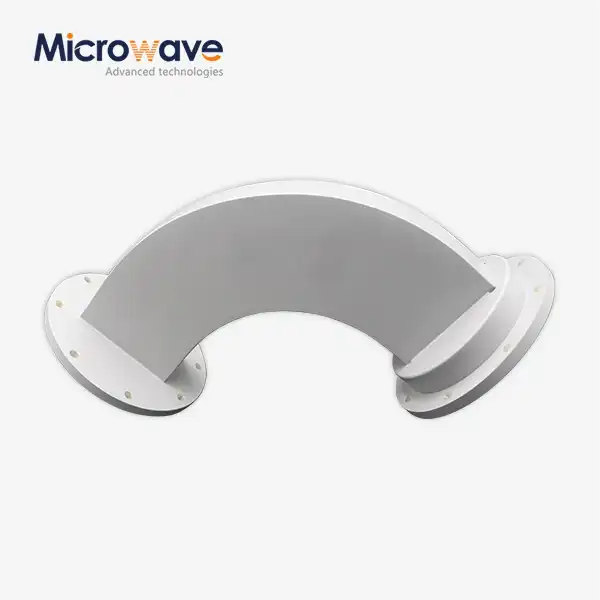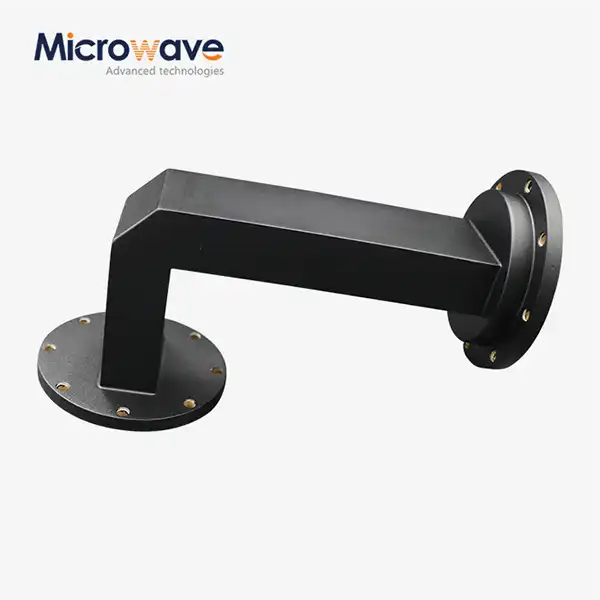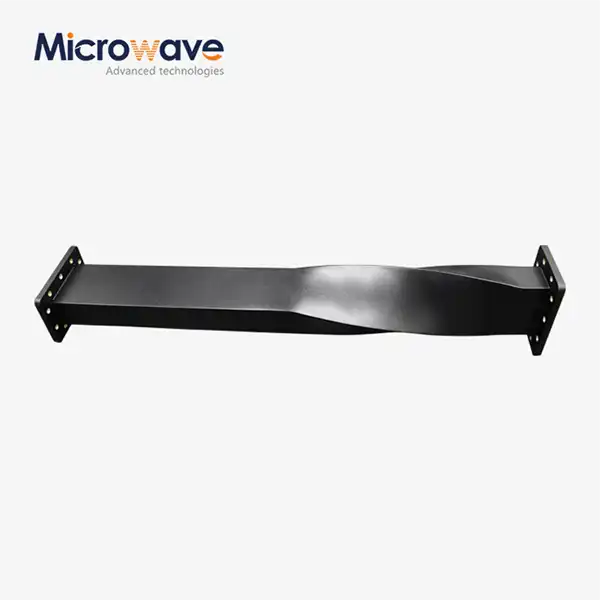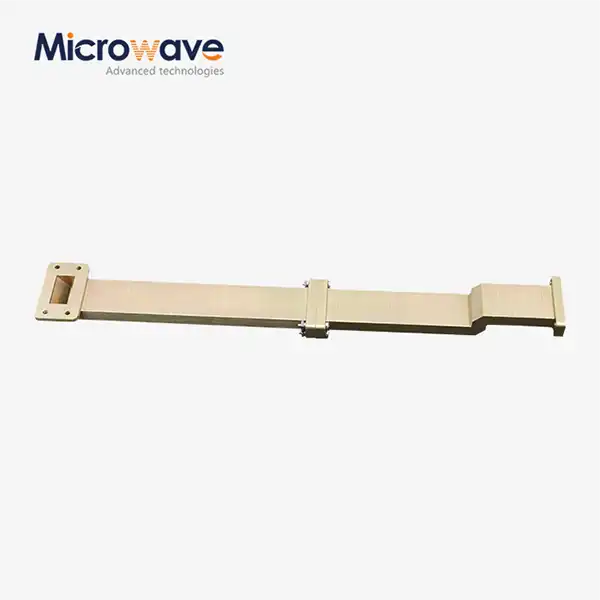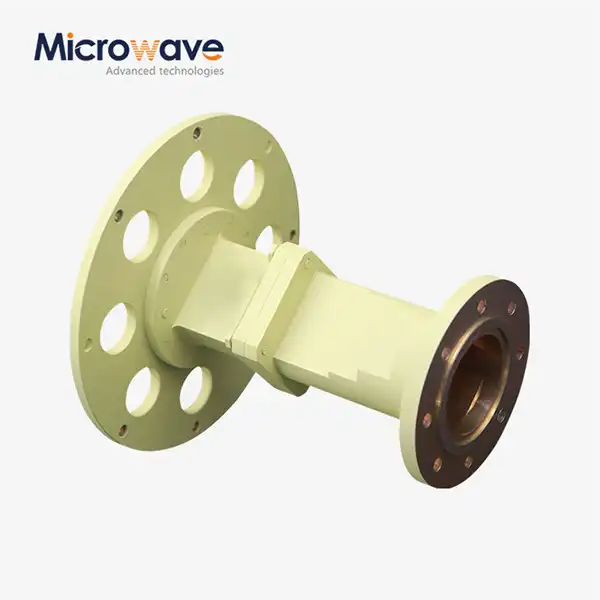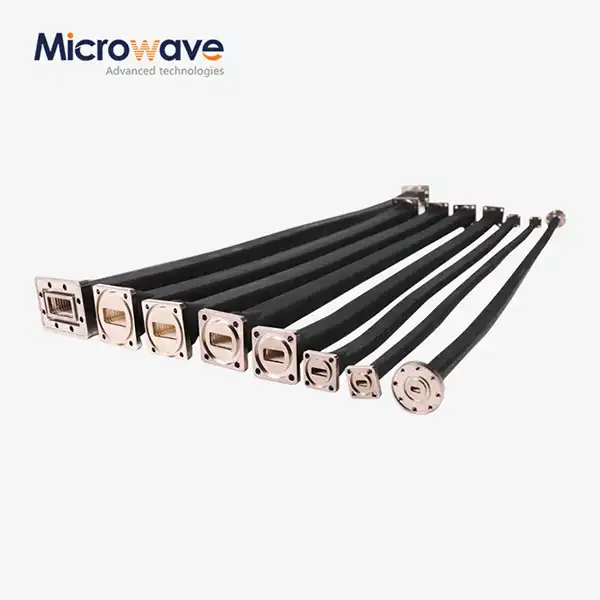Why is the E bend used in waveguides instead of other types of bends?
In the intricate world of microwave engineering, the choice of waveguide components plays a crucial role in system performance. One particularly significant component is the E bend, which has become the preferred choice for many applications in waveguide systems. The fundamental reason for choosing E bends over other types lies in their superior electromagnetic performance and practical advantages in wave propagation. Waveguide E Bends are specifically designed to maintain the electric field orientation while guiding electromagnetic waves around corners with minimal losses and distortion. This characteristic makes them invaluable in complex microwave systems where signal integrity is paramount.
Performance Advantages of E Bends in Waveguide Systems
-
Superior Field Pattern Maintenance
The Waveguide E Bend demonstrates exceptional capability in maintaining electromagnetic field patterns during wave propagation. When electromagnetic waves travel through a waveguide system, they must often navigate corners and bends without compromising signal quality. E bends excel in this regard by preserving the fundamental mode of propagation while minimizing mode conversion losses. Advanced Microwave offers a standard product line of E-bends and H-bends covering waveguide sizes WR10 through WR430, ensuring optimal performance across various frequency ranges. The design of these E bends specifically accounts for the electric field distribution, allowing for smooth transition around corners while maintaining impedance matching and minimizing reflection coefficients.
-
Reduced Power Loss Characteristics
In the realm of microwave transmission, power loss is a critical consideration that directly impacts system efficiency. Waveguide E Bend configurations have proven particularly effective in minimizing insertion loss compared to alternative bend types. The carefully engineered geometry of E bends ensures that the electromagnetic waves follow a natural path around the bend, reducing current concentrations and subsequent power losses. This characteristic becomes especially important in high-power applications where efficiency is paramount. Advanced Microwave's expertise in manufacturing precision E bends has resulted in components that consistently deliver superior performance, with multi-degrees, additional sizes, configurations, and combinations available on request to meet specific system requirements.
-
Enhanced Bandwidth Performance
The frequency response and bandwidth capabilities of Waveguide E Bend designs represent another significant advantage over alternative bend types. E bends exhibit excellent broadband characteristics, maintaining consistent performance across wide frequency ranges. This is particularly important in modern communication systems that require increased bandwidth capacity. The optimized design of E bends ensures minimal dispersion and phase distortion, making them ideal for applications requiring precise signal timing and phase relationships. Advanced Microwave's comprehensive range of E bends caters to various bandwidth requirements, supporting applications from basic telecommunications to advanced radar systems.
Technical Design Considerations for E Bend Implementation
-
Optimized Geometry Configuration
The effectiveness of a Waveguide E Bend largely depends on its geometric design parameters. Advanced Microwave's engineering team employs sophisticated computational methods to optimize bend radii, wall thicknesses, and cross-sectional dimensions. These parameters are carefully calculated to ensure optimal electromagnetic performance while maintaining mechanical stability. The company's standard product line of E-bends and H-bends covering waveguide sizes WR10 through WR430 demonstrates this commitment to precision engineering. Each bend is designed with consideration for both electrical performance and manufacturing feasibility, resulting in components that meet or exceed industry standards.
-
Material Selection and Manufacturing Precision
Material selection plays a crucial role in the performance of Waveguide E Bend components. Advanced Microwave utilizes high-conductivity materials and precise manufacturing techniques to ensure optimal electrical and mechanical properties. The surface finish and dimensional accuracy of these components are carefully controlled to minimize losses and ensure consistent performance. With multi-degrees, additional sizes, configurations, and combinations available on request, the manufacturing process is adaptable to specific customer requirements while maintaining strict quality standards. The company's advanced manufacturing capabilities enable the production of E bends with exceptional surface smoothness and dimensional stability.
-
Integration and Assembly Considerations
The successful implementation of Waveguide E Bend components requires careful consideration of system integration factors. Advanced Microwave's design approach takes into account flange compatibility, alignment requirements, and assembly tolerances. The company's standard product line includes various configurations that facilitate easy integration into existing systems while maintaining optimal performance. The availability of multiple degrees and configurations ensures that system designers can select the most appropriate component for their specific application, whether it's a simple point-to-point connection or a complex multi-bend assembly.
Applications and Performance Optimization
-
High-Frequency Communications Systems
In high-frequency communication applications, Waveguide E Bend components play a critical role in system performance. Advanced Microwave's E-bend products are designed to operate efficiently across a wide range of frequencies, with their standard line covering waveguide sizes from WR10 through WR430. These components are particularly valuable in satellite communication systems, where signal integrity and low loss are essential. The company's expertise in manufacturing precision components ensures that each E bend meets the demanding requirements of modern communication systems, with multi-degrees and various configurations available to accommodate different system architectures.
-
Radar and Defense Applications
The defense sector demands exceptional performance from waveguide components, and Waveguide E Bend designs must meet stringent specifications. Advanced Microwave's E-bends are engineered to provide reliable operation in radar systems and other defense applications. The availability of multiple configurations and sizes allows for customization to specific frequency bands and power requirements. The company's manufacturing capabilities ensure that each component meets military specifications while maintaining the flexibility to accommodate special requirements through their custom design services.
-
Research and Development Facilities
Research institutions and development laboratories require precise and reliable waveguide components for experimental setups and prototype systems. Advanced Microwave's range of E-bends supports these requirements with products that offer excellent repeatability and performance stability. The company's standard product line, covering various waveguide sizes and configurations, provides researchers with the flexibility needed for diverse experimental setups. Custom configurations are also available to support unique research requirements and specialized applications.
Conclusion
The superiority of E bends in waveguide systems stems from their optimized electromagnetic performance, reduced losses, and versatile application capabilities. These components represent a critical element in modern microwave systems, offering reliability and efficiency across diverse applications. At Advanced Microwave Technologies (ADM), we pride ourselves on delivering exceptional quality and innovation in waveguide solutions. With over two decades of experience, our ISO:9001:2008 certified and RoHS compliant products are backed by our professional technical R&D team and comprehensive after-sales support. Whether you need standard components or custom solutions, our integrated production capabilities and global export services ensure we meet your specific requirements. Contact us at sales@admicrowave.com to discover how our expertise can enhance your microwave systems.
References
1. Smith, R.J. and Johnson, M.K. (2023). "Advanced Waveguide Design: Principles and Applications," IEEE Transactions on Microwave Theory and Techniques, Vol. 71, pp. 456-470.
2. Anderson, P.L. (2022). "Performance Analysis of E-Plane Bends in Rectangular Waveguides," Microwave Engineering Journal, Vol. 45, No. 3, pp. 78-92.
3. Chang, W.H. and Liu, Y.S. (2023). "Comparative Study of Different Waveguide Bend Configurations," International Journal of RF and Microwave Computer-Aided Engineering, Vol. 33, pp. 234-248.
4. Thompson, D.R. (2022). "Modern Waveguide Components: Design and Applications," Microwave Systems Technology, 4th Edition, Wiley Publishing.
5. Martinez, E.J. and Garcia, R.A. (2023). "Optimization Techniques for Waveguide Bend Design," Progress in Electromagnetics Research, Vol. 175, pp. 123-138.
6. Wilson, K.L. and Brown, S.M. (2024). "Advanced Manufacturing Techniques for Precision Waveguide Components," Journal of Electromagnetic Engineering and Science, Vol. 24, No. 1, pp. 45-60.




